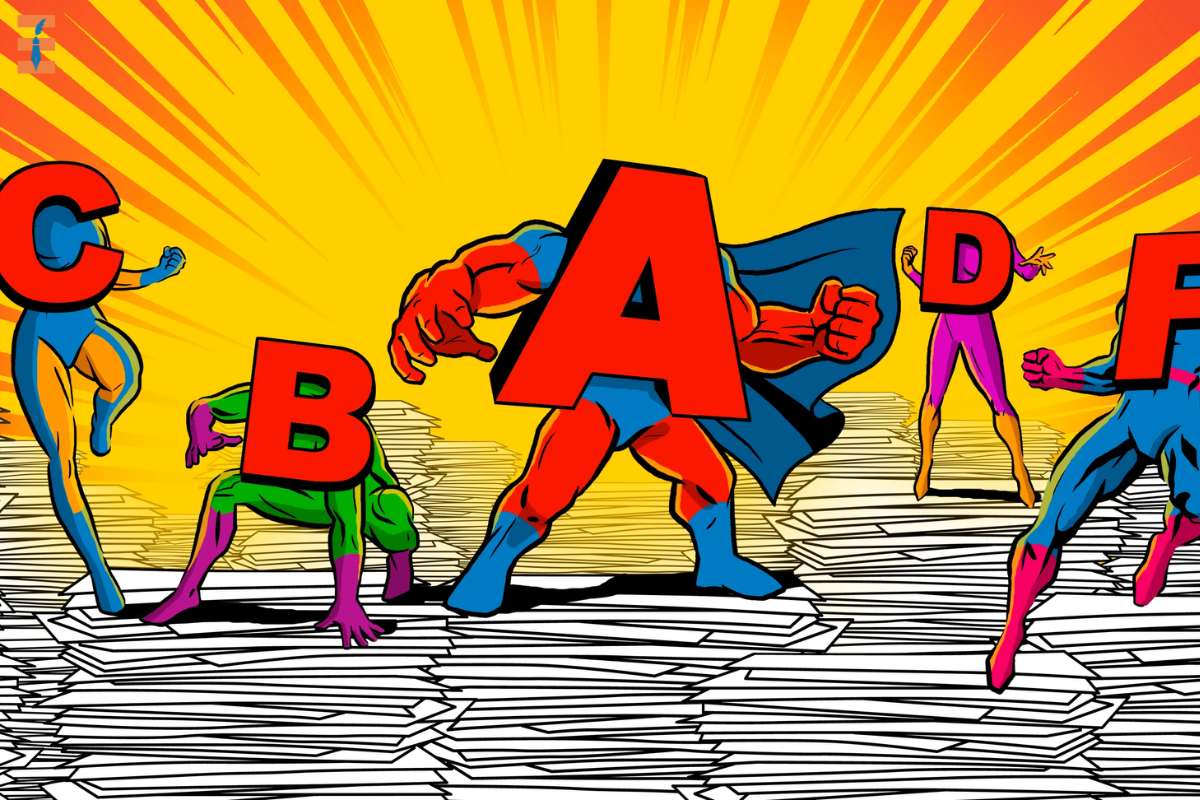A common practice these days is to classify pupils as either A, B, or C. A growing number of educational institutions have adopted the usage of the letter grades system. However, a significant minority of academics hold the view that letter grade structure is both effective and objective.
The majority of parents are unwilling to look deeper and make efforts to comprehend the reasons behind their children’s failures. It is more comfortable for parents to get straightforward symbols indicating whether their children are hard-working or lazy, intelligent or dumb. It is important to comprehend that this strategy is a form of spectacle that is based on just a portion of reality, and it is not prudent to put one’s whole faith in it.
Here are 6 points that you should know about Letter Grades;
1. The use of letters to grade students is deceptive.
What do letters A and B stand for? What information should teenagers know in order to be considered A students? What are the B students missing out on? It might be difficult to comprehend the criteria that educators use in order to classify students into different buckets. In addition, education is a complicated procedure that is affected by a great deal of different circumstances.

A single symbol cannot adequately convey what it is. Imagine for a moment that the identity of your character is represented by a single letter grade. Would the people around you be able to determine if you are a good person or a terrible one? Of course, no. There are a lot of intricacies that need to be considered, and you should do that.
2. Teachers don’t like letter grades
According to the statistics, the vast majority of instructors would prefer to adopt alternative grading methods. However, sadly, instructors do not have the authority to set classroom policies.
3. It’s not true that letter grades signify what you believe they imply.
People often believe that letter grades may adequately reflect an individual’s whole set of characteristics and talents. For instance, a grade of A indicates that a person has intelligence, perseverance, and skill and that they are prepared to enroll in college or get a scholarship. In point of fact, A is a reference to a particular action and indicates that a person has successfully completed a test, penned an excellent essay, or answered the instructor’s questions accurately.

If a student gets an A on one assignment, it does not always suggest that they are good or awful in all other subjects; they may earn a B or C on the next assignment, and this would not necessarily mean that they have changed into a different person.
It is common practice for educators to categorize students according to their level of academic achievement. They have the mindset that kids who get an A are very bright and gifted, while pupils who receive an F are sluggish and inept. This caste-like divide is reminiscent of the one that exists in India. The climate in the classroom is one of favoritism and discrimination due to teachers who display partiality and persecute students who are not doing well. If someone has told you that you are “not clever and competent enough,” it might be challenging to prove that you are worthy of respect.
4. What about pupils earning a C?
When the knowledge of young people is considered to be ordinary, academics use the letter C. In point of fact, there is nothing inherently wrong with having ordinary abilities. If we look at the statistics, it is easy to see that the vast majority of students perform at a level that is considered to be ordinary, while a very small number of students either excel or struggle significantly. Students are able to relax and generate positive thoughts when they are given the letter C. I am not a loser.” There is nothing to encourage one to exert effort or continue.
B indicates that a student studies better than the majority of their contemporaries and achieves outcomes that are greater than what the typical academic norms dictate. In order to achieve an A, a student has to perform at least two levels better than the average indication. Because level A is not the highest possible, other levels could exist.
This indicates that a gifted student of sculpture and Leonardo da Vinci would both get an A for their work. The usage of letter grades is demotivating since obtaining an A is no longer considered an outstanding accomplishment. Students who are currently successful don’t perceive any room for improvement and are content with what they have.
It is up to the individual lecturer to choose how the letter grades should be interpreted. If there aren’t any further explanations provided, students won’t even grasp what they did wrong or what they need to work on improving; instead, they will just accept that receiving bad grades is their lot in life and there is nothing they can do about it.
5. Creativity is stifled by letters.

Learners are simply too focused on their low standing and a negative reputation in the student community as a result of letter grades, which causes them to be hesitant to demonstrate their originality and to make mistakes. This inhibits the development of fresh ideas and casts a shadow on promising opportunities.
6. The academic world is slow to adopt new grading methods.
The term “innovating” refers to the practice of exchanging letters for numbers (1–4), standards, or making use of no markings at all. Educators have not yet arrived at a perfect formula that can be applied to all activities and tasks, which is unfortunately the case. The fact that the agencies responsible for creating grading systems are also responsible for innovating new grading systems may be one explanation for the lack of advancement. There are a lot of faults and errors that aren’t discovered since it’s either far too arduous to modify things or nobody notices them.
Imagine for a moment that there are no tax inspections and that each firm is solely responsible for managing its own budget. If business owners had strong incentives, would they be more likely to make honest transactions and avoid dirty money? The urge to supplement one’s income by engaging in unethical business practices is just too powerful to ignore. As a result, we need the presence of an impartial observer.
Conclusion:
Overall, teachers in an alternative grading system play a vital role in creating a supportive and growth-oriented learning environment. By emphasizing feedback, authentic assessment, and individualized approaches, they help students develop a deeper understanding of the subject matter and foster a lifelong love for learning. There are various reasons like the above-mentioned in the draft, that should be referred to before going forward with the new education policy. We consider you have understood the importance of having a proper grading system that enables your kids to create a bright future.










